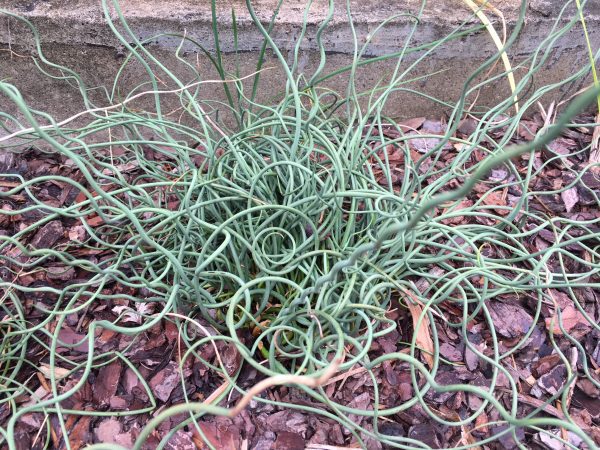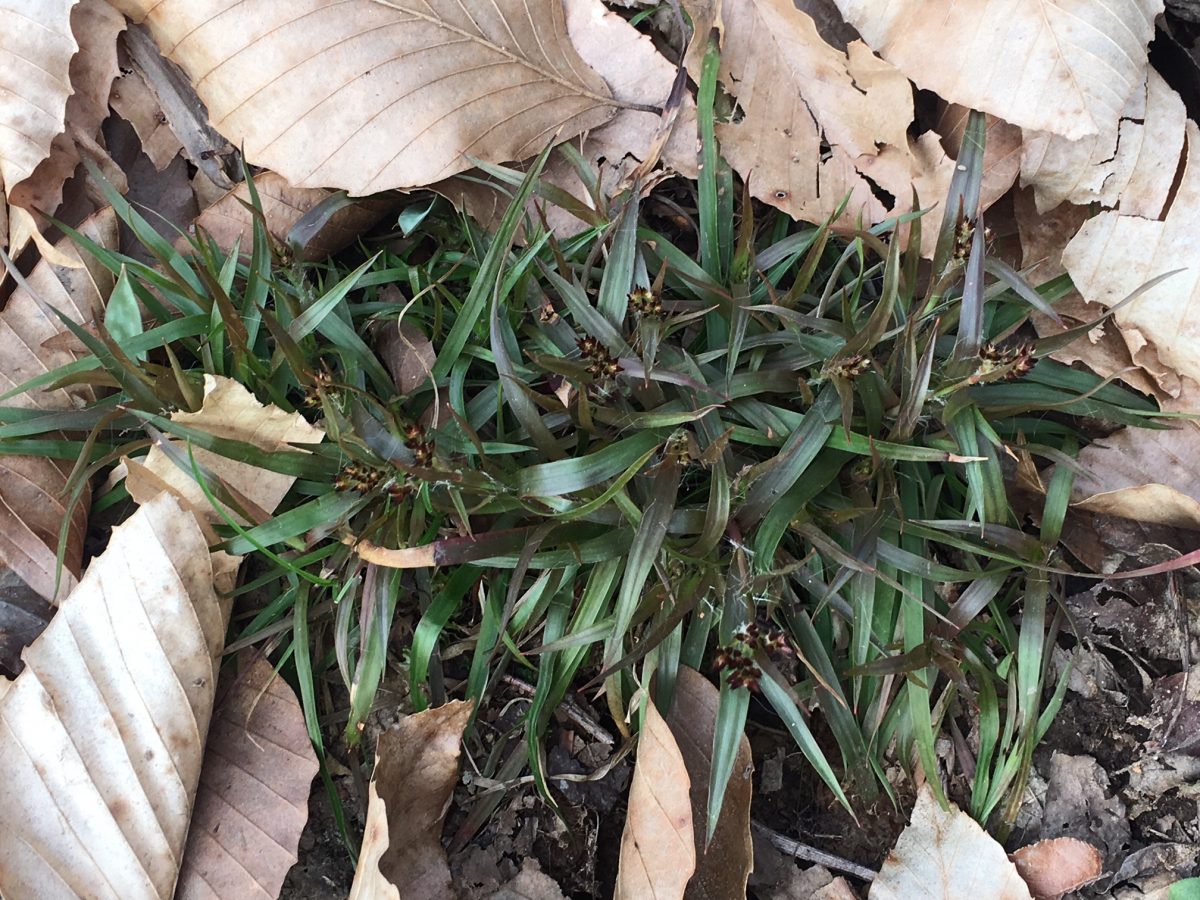Rushes can restore some ecosystems – and beautify your backyard

“I call rushes the final frontier,” says Paula Gross, former associate director of the UNC Charlotte Botanical Gardens. “That’s because I know so little about them myself!”
A 19th century botanist described the genus as “obscure and uninviting,” she notes. As with so many other plants, my interest in rushes lies at the intersection of what I observe in the natural areas of the Uwharries and what I grow in my backyard in Charlotte.
Common rush (Juncus effusus) is often used in riparian restoration projects like the one we did with the Ecosystem Enhancement Program several years ago. It provides cover for wildlife and helps stabilize soil and filter stormwater runoff. Gross says Jim Matthews, professor emeritus at UNC Charlotte and founder of Habitat Assessment and Restoration Professionals, calls it the “Cadillac of wetland plants” because it can grow in standing water but also tolerate dry spells.
Before we implemented a habitat management plan on our land in the Uwharries, I tagged along with the biologist who came to do a baseline assessment. Along the way, he casually pointed to a spiky green plant along the margins of a wetland and said, “That’s a rush.”

A rush on a path in the Uwharries. Photo: Ruth Ann Grissom.
Now, back in my younger days, that meant something entirely different. I nodded and quickly moved on. It wasn’t until I’d cleared the jungle of invasives from my long-neglected backyard that I really took stock of the Juncus genus.
The sticky bull tallow soil that cuts across a swath of my yard seems to suit path rush (Juncus tenuis). These airy tufts of needle-like foliage grow to less than a foot. Their blooms are best appreciated on hands and knees, with a magnifying glass. They’re inconspicuous, to say the least, and then they turn brown and set seed that scatter with abandon.
I’m partial to gardening with native plants, but honestly, path rush can look a little weedy. Recently, I’ve managed to corral several clumps into a nook near a Virginia sweetspire (Itea virginica), and I’m finally beginning to appreciate their charm.
Common rush popped up in an area with heavy, wet clay among the arrowwood (Viburnum dentatum), possumhaw (Viburnum nudum) and sweet pepperbush (Clethra alnifolia). The upright, vase-shaped clump grew to well over three feet, dwarfing the newly-planted shrubs. Once it started to bloom in late spring – a spray of tiny flowers evocative of a grass – I realized it’s the same one I see so often in the Uwharries.
Last winter, while hiking along the Uwharrie River, a curious little plant caught my eye. The clump was low and coarse, somewhat reminiscent of crabgrass, but the strappy leaves had an attractive burgundy tinge. Their margins had errant strings as if the leaves had started to unravel. There were even clusters of tiny blooms the color of dried blood. I was captivated.
For some reason, my first guess was that it might be a sedge. Recalling the botanical mnemonic – sedges have edges; rushes are round; grasses have nodes from tips to ground – I plucked a leaf and rolled the base between my finger and thumb. I didn’t feel any obvious edges. At that point I was stumped, so I sent a photo and description of the site to Moni Bates, the botanist who did the natural heritage inventory in Montgomery County. She immediately recognized it as a member of the Luzula genus, which is in the rush family, and most likely hairy woodrush (Luzula acuminata).

A rush in the author’s garden. Photo: Ruth Ann Grissom.
Gross says this appealing species is occasionally available at the UNC Charlotte Botanical Garden plant sales. I’d gladly add it to the moist understory of my shrub border.
Despite their unassuming nature, rushes are gaining traction as ornamentals thanks to their interesting colors, textures and forms. Named cultivars of common rush, such as ‘Big Twister’ and ‘Spiralis’ have corkscrew foliage. The non-native Juncus inflexus has spawned colorful cultivars, including ‘Blue Mohawk’ and ‘Blue Arrow.’ The species has also been crossed with path rush (Juncus tenuis) to create ‘Blue Dart.’ Because they require consistent moisture, their use is generally restricted to water features or containers.
Beware of the plant called horsetail or scouring rush (Equisetum hyemale). Despite its common name, it is not a rush. This striking plant has stiff green stems with bands of white and black at the nodes. It gets terribly aggressive under cultivation.
Even though it’s native to wetlands across the Southeast, I’ve seen it out-competing yuccas in the hell strip along a busy thoroughfare. In the right container, it could be a low-maintenance show-stopper, complementing an industrial, Asian or modern aesthetic. Unleashing it in your garden would be exponentially worse than my struggles with path rush.